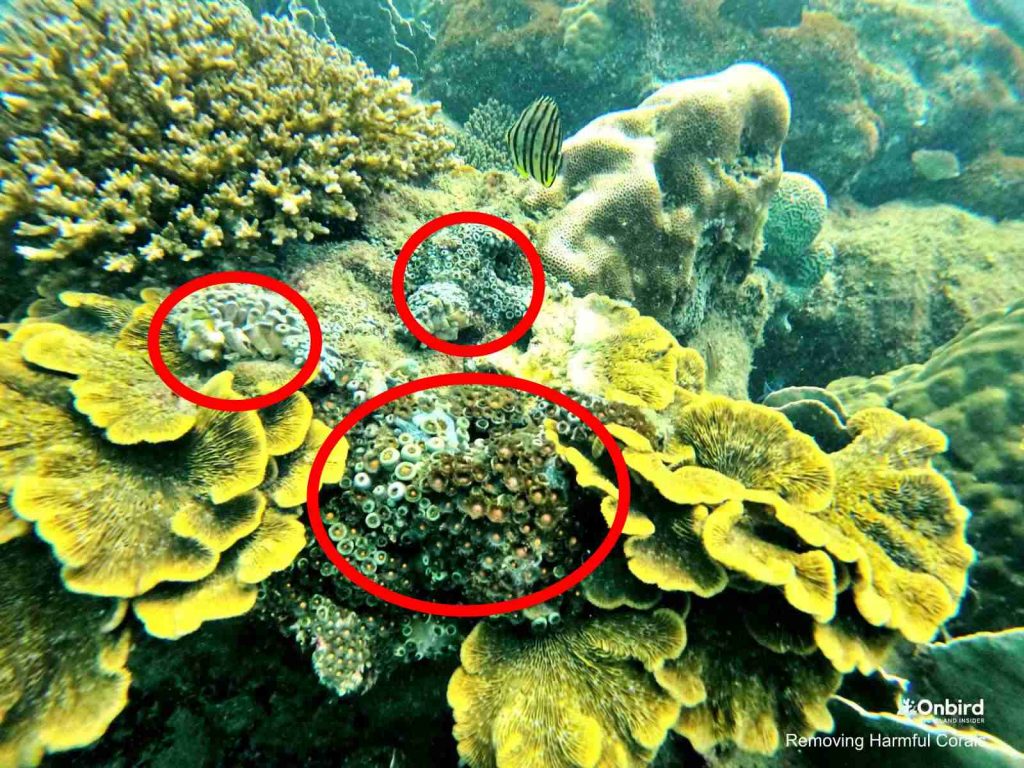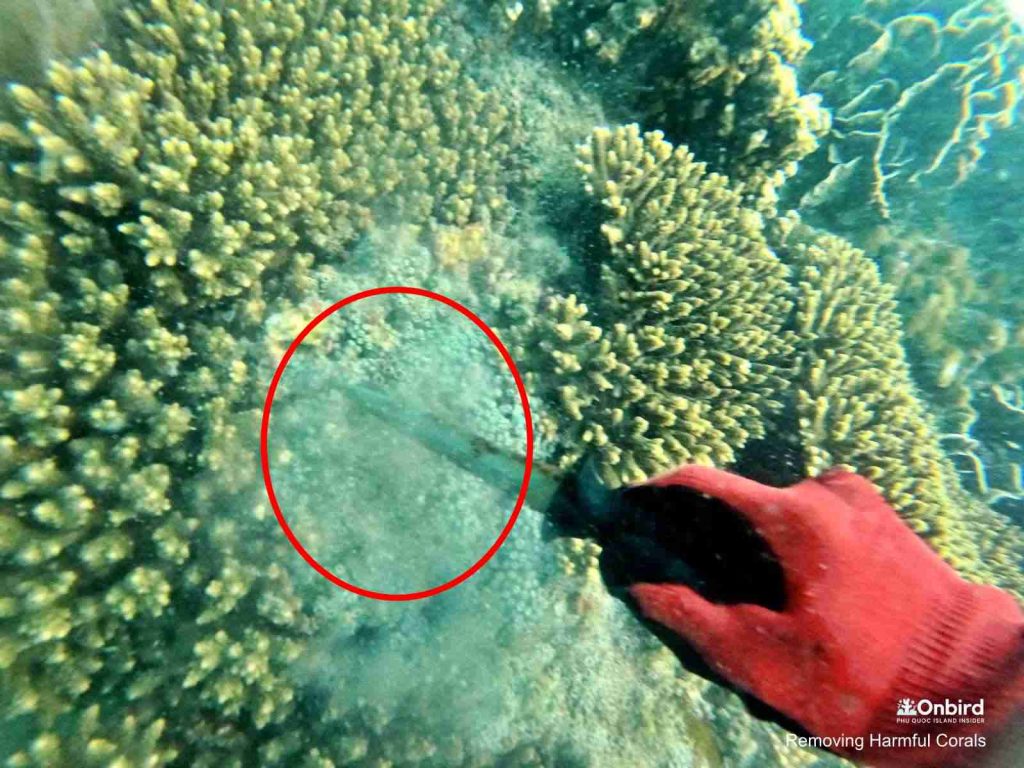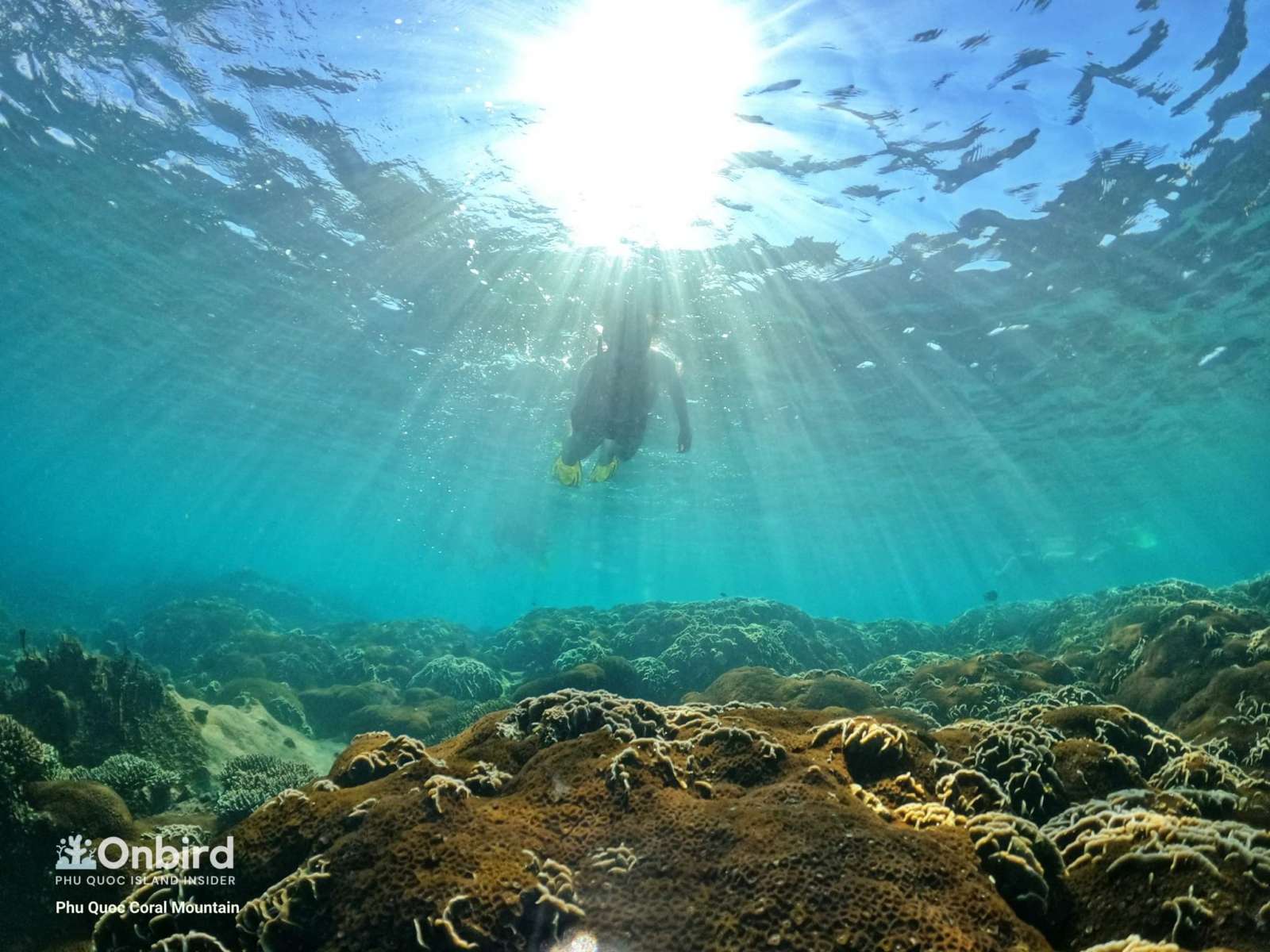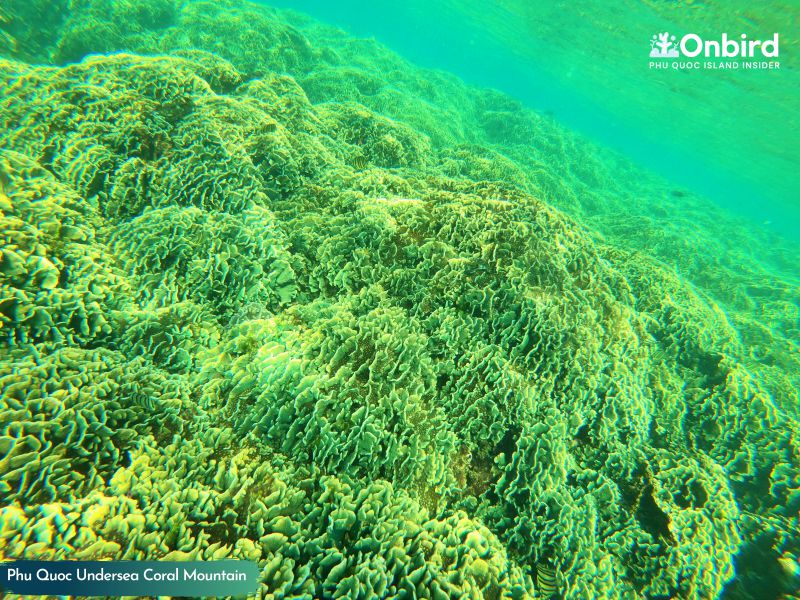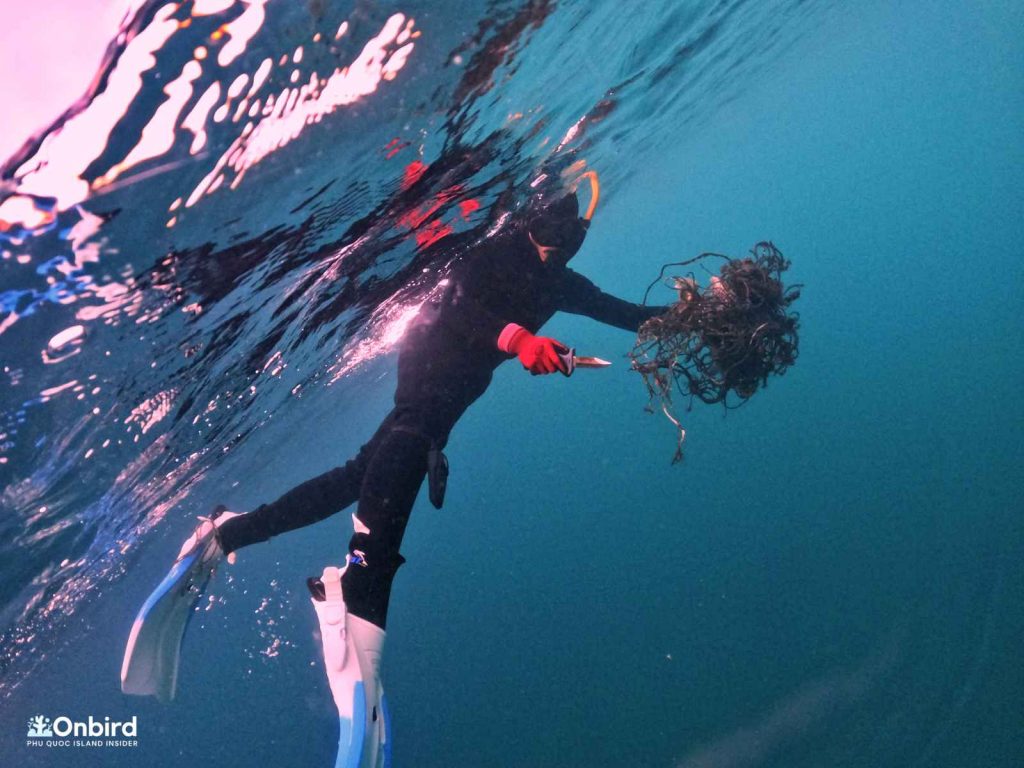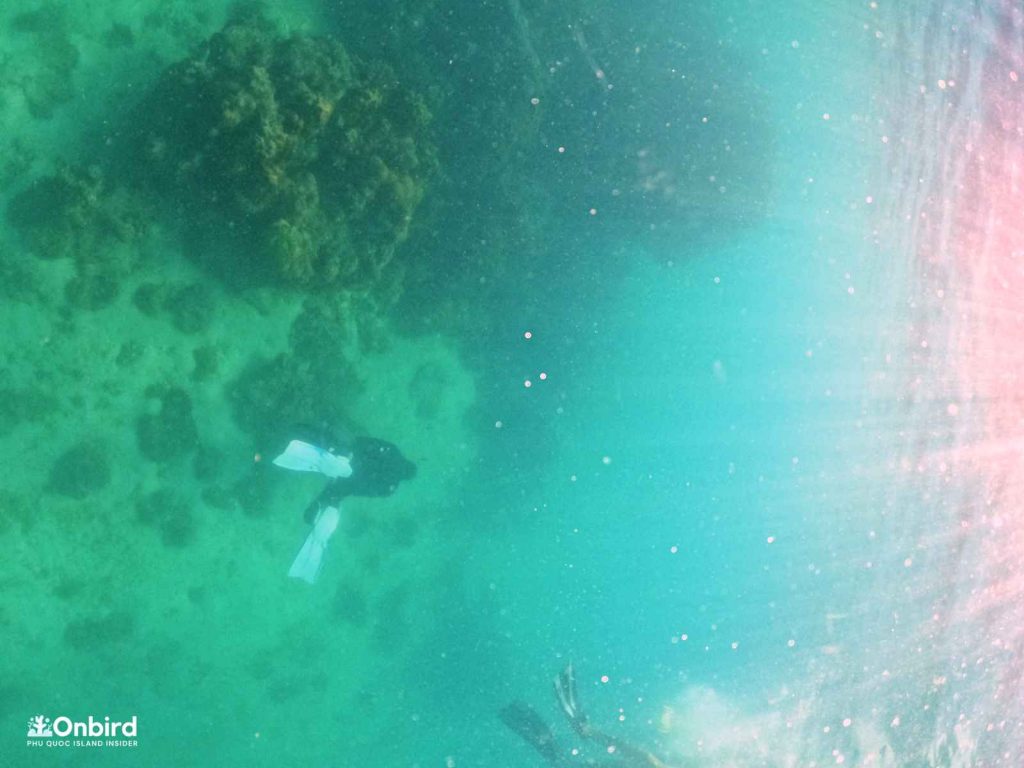MAIN CONTENTS
1. SITUATION IN PHU QUOC
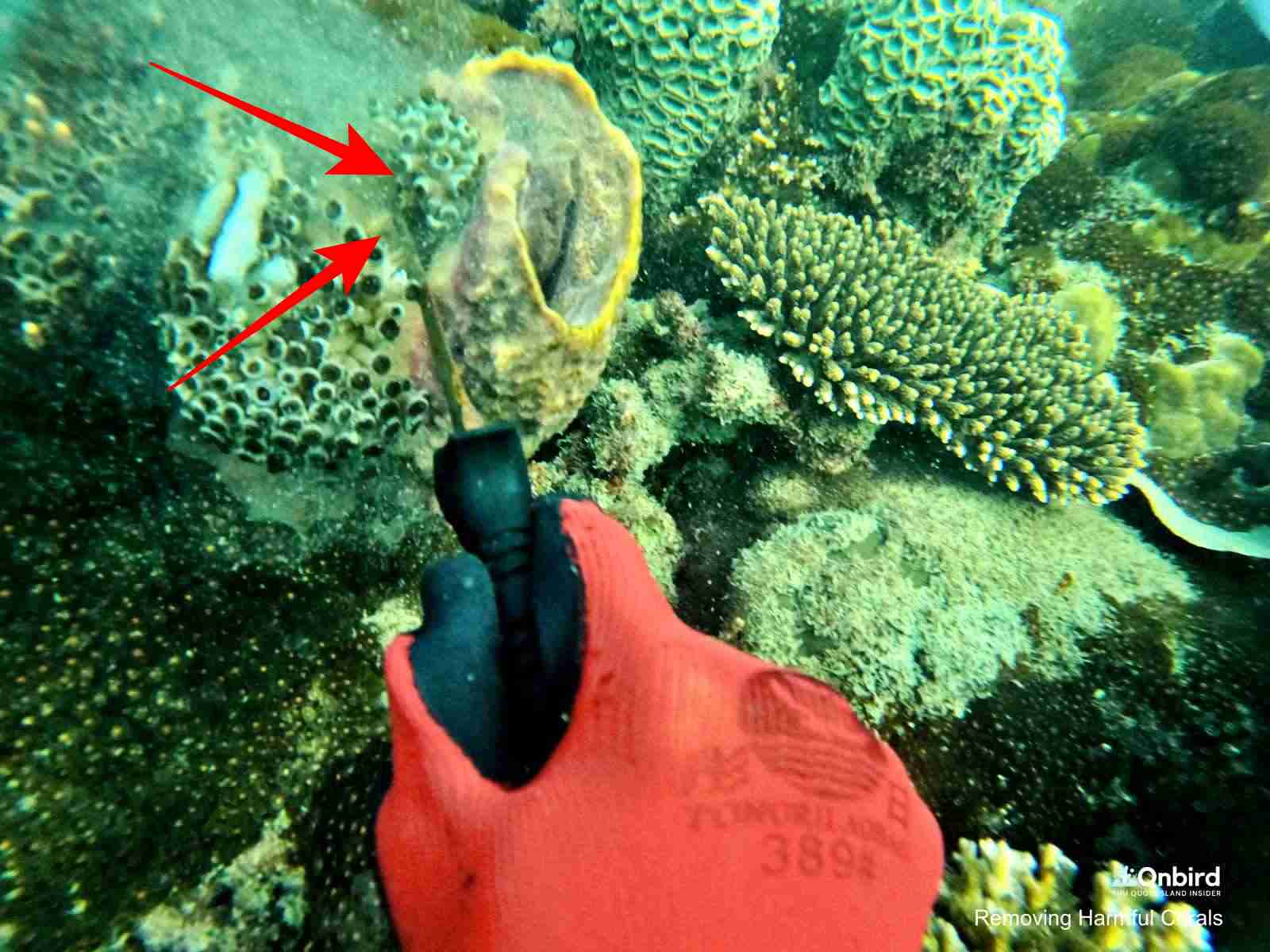
The zooxanthellae cells can not carry out photosynthesis to produce sugars, lipids (fats) and oxygen… which corals use to grow and carry out cellular respiration then leads to the coral’s starvation and death.
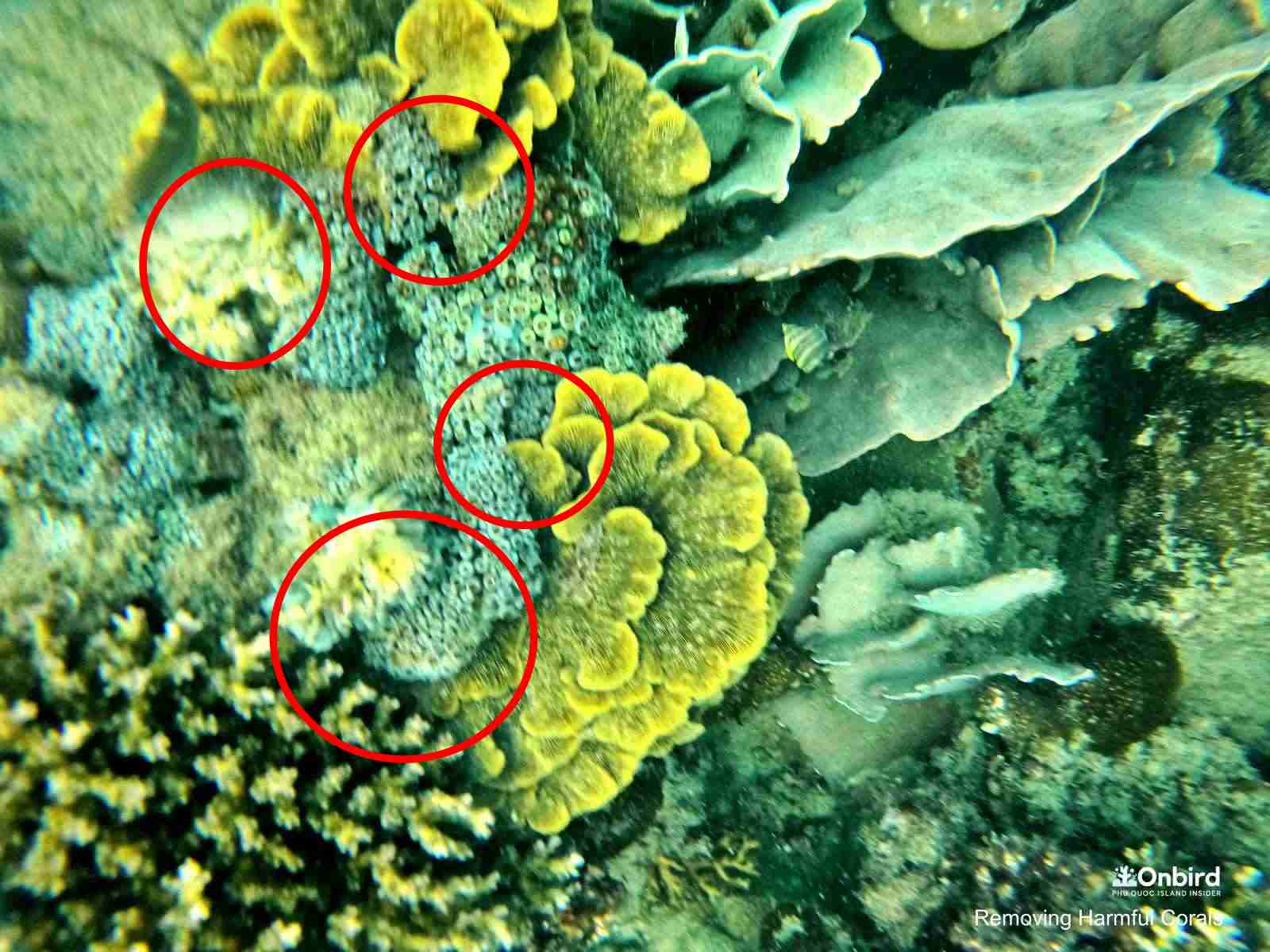
2. CORAL REEF CAN NOT RE-GROW
3. RESCUING CORAL IN PHU QUOC FROM THE INVASIVE & HARMFUL CORALS
To protect hard coral areas in Phu Quoc that are now under threat by the rise of Button Polyps Coral, the OnBird Phu Quoc team has been conducting activities to remove the invasive or harmful coral from the coral reefs in Phu Quoc Island. “OnBird underwater warriors” are equipped with proper gears (wetsuit, glove and knife) to remove these harmful corals from alive coral clusters and dead coral areas toward which new corals can attach and develop. This reef cleaning is a usual activity as we do it on almost every snorkelling excursion if the water conditions are favourable.
Please note: this coral is a species of Zoanthid coral (e.g. Palythoa species and Zoanthus species) that can contain a highly toxic, naturally occurring and potentially lethal substance known as Palytoxin which is poisonous to humans. The poisons exist in the coral as protection from predators in nature. Thereby, please don’t touch or remove them by yourself.



 Tiếng Việt
Tiếng Việt